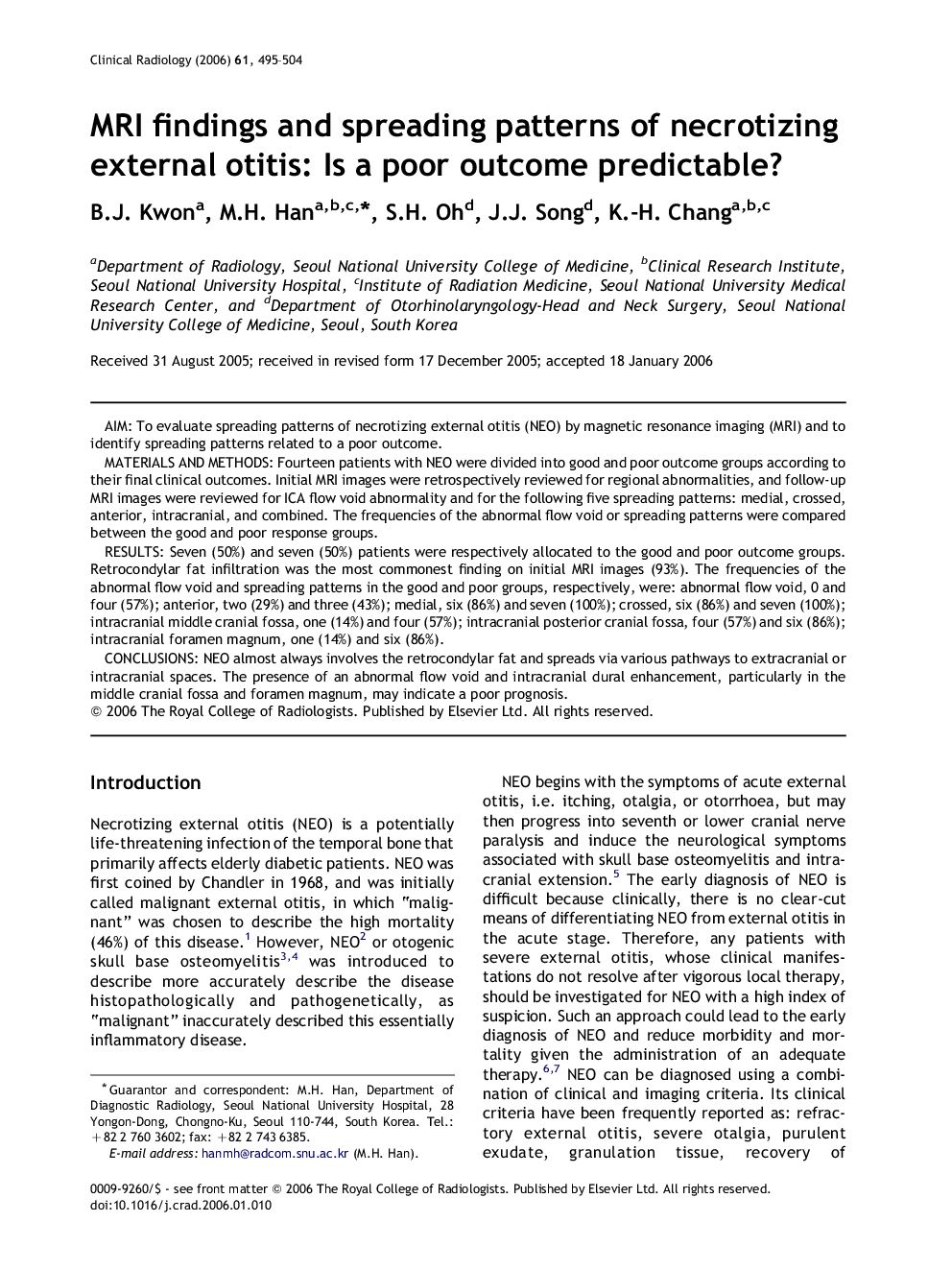| Article ID | Journal | Published Year | Pages | File Type |
|---|---|---|---|---|
| 3984233 | Clinical Radiology | 2006 | 10 Pages |
AIMTo evaluate spreading patterns of necrotizing external otitis (NEO) by magnetic resonance imaging (MRI) and to identify spreading patterns related to a poor outcome.MATERIALS AND METHODSFourteen patients with NEO were divided into good and poor outcome groups according to their final clinical outcomes. Initial MRI images were retrospectively reviewed for regional abnormalities, and follow-up MRI images were reviewed for ICA flow void abnormality and for the following five spreading patterns: medial, crossed, anterior, intracranial, and combined. The frequencies of the abnormal flow void or spreading patterns were compared between the good and poor response groups.RESULTSSeven (50%) and seven (50%) patients were respectively allocated to the good and poor outcome groups. Retrocondylar fat infiltration was the most commonest finding on initial MRI images (93%). The frequencies of the abnormal flow void and spreading patterns in the good and poor groups, respectively, were: abnormal flow void, 0 and four (57%); anterior, two (29%) and three (43%); medial, six (86%) and seven (100%); crossed, six (86%) and seven (100%); intracranial middle cranial fossa, one (14%) and four (57%); intracranial posterior cranial fossa, four (57%) and six (86%); intracranial foramen magnum, one (14%) and six (86%).CONCLUSIONSNEO almost always involves the retrocondylar fat and spreads via various pathways to extracranial or intracranial spaces. The presence of an abnormal flow void and intracranial dural enhancement, particularly in the middle cranial fossa and foramen magnum, may indicate a poor prognosis.
